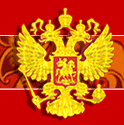A revival of the Sergiev matryoshka doll
trade was started in 1970s-1980s. The matryoshkas made by E.
Latysheva and N. Voronina are the best evidence of the full
flourish of the trade. The upsurge of the interest in matryoshka
was felt not only in Sergiev Posad but also in the nearby town
of  Khotkovo.
The Abramtsevo Arts and Crafts School at Khotkovo gave training
in wood carving and pottery. The pottery students were the first
to attempt painting matryoshka dolls. They established the "Matryona"
company in Khotkovo in 1992. In addition to painting traditional
dolls the craftsmen of the company started designing new doll
styles and produced some successful novel articles such as matryoshka
dolls with a storage space inside, carved wooden figurines of
the traditional Russian Father Christmas, collapsible painted
wooden toys, etc. Khotkovo.
The Abramtsevo Arts and Crafts School at Khotkovo gave training
in wood carving and pottery. The pottery students were the first
to attempt painting matryoshka dolls. They established the "Matryona"
company in Khotkovo in 1992. In addition to painting traditional
dolls the craftsmen of the company started designing new doll
styles and produced some successful novel articles such as matryoshka
dolls with a storage space inside, carved wooden figurines of
the traditional Russian Father Christmas, collapsible painted
wooden toys, etc.
The
ancient Russian city of Tver is famous for its rich folk arts
traditions. The new art toys made by Tver craftsmen from wood
and textiles in the recent period exhibit an impressive creativity
and profound awareness of the ancient Russian culture. Many
collectors of the handmade Russian toys have acquired the
" Baba Yaga" (Evil Spirit) Tver dolls.
Several Moscow artists, for instance, husband
and wife Chibisov, always made toys for their children. In
the new market economy, they began making a wider variety
of toys for customers, primarily foreign tourists who are
always interested in bringing attractive souvenirs from Russia.
Collectors of toys also buy the matryoshka dolls, pyramids,
rattles, tops, toy horses, and other articles hand-made by
contemporary professional artists inspired by the Russian
traditional folk art.
The artist Anna Tsimbal has invented a new
type of Christmas-tree decorations which are hand-painted
wooden articles such as balls or pyramids. She also makes
highly original hand-painted wooden souvenir articles of various
shapes.
Several workshops have been established recently
where teams of artists and craftsmen collaborate in producing
new types of Russian hand-made toys working in the spirit
of the 19th-century arts-and-crafts cooperatives. For instance,
the Moscow "Fakel" company produces hand-painted
wooden toys and pieces of original basketry doll furniture.
Galina and Marina Sinitsky are manufacturing
highly original textile dolls of human figures and cats.
Several new Moscow companies such as "Bylina", "Russian
dolls", and "Our dolls" are continuing the
tradition of manufacturing dolls in ethnic costumes initiated
in the 19th century by the "Children's education"
workshop. The dolls are sold most to toy collectors and as
souvenirs for foreign tourists.
The toy-making tradition of Saint-Petersburg
can be traced back to the time when the city was founded 300
years ago. Before the region was taken over by the Russian
Empire the local Ugro-Finnish communities had manufactured
dolls for the everyday life purposes and for use in the ancient
sacred rituals. Peter the Great, the founder of Saint-Petersburg,
established the city as a center of West European culture
and therefore the Russian folk art did not develop there as
fast as in other regions of Russia. The urban-style dolls
made in Saint-Petersburg were manufactured of expensive materials
and were intended for the decorative purposes as interior
furnishings. Doll makers lived mostly at Okhta, a suburb of
Saint-Petersburg, and their favorite subjects were figurines
of noble ladies, high-society beauties, hussars, and other
military officers. The dolls were sold in the city markets
and shops. Starting from the late 20s of the 19th century
the demand for dolls grew sharply as the demand for dolls
and other toys for children increasingly grew from the families
of different social classes. The number of doll makers grew
accordingly. The Handicrafts Museum in Saint-Petersburg had
an extensive collection of locally made dolls.
After the Communist revolution of 1917 the
private toy-making workshops were nationalized and one of
them is still in existence bearing the name "Igrotekhnika"
Factory.
In early 90s of the 20th century the doll-making
trade was revived. The graceful appearance of the "urban-style"
dolls brings back the cozy atmosphere of the rich Russian
country estates of the past centuries. The "Poteshny
promysel" company in Saint-Petersburg is the major manufacturer
of dolls dressed in ethnic and high-society costumes typical
for different historic periods and nations. Their most popular
products are the sets of dolls sold under the titles the "Tsar
Dynasty", which includes dolls of all Russian tsars from
Peter the Great to Nicholas II, and "Historic personages",
which includes the dolls of famous Russian statesmen and field
marshals Suvorov and Kutuzov.
The small-size dolls are very carefully
executed, sometime have porcelain parts (heads and hands),
and have a considerable artistic value.
|

